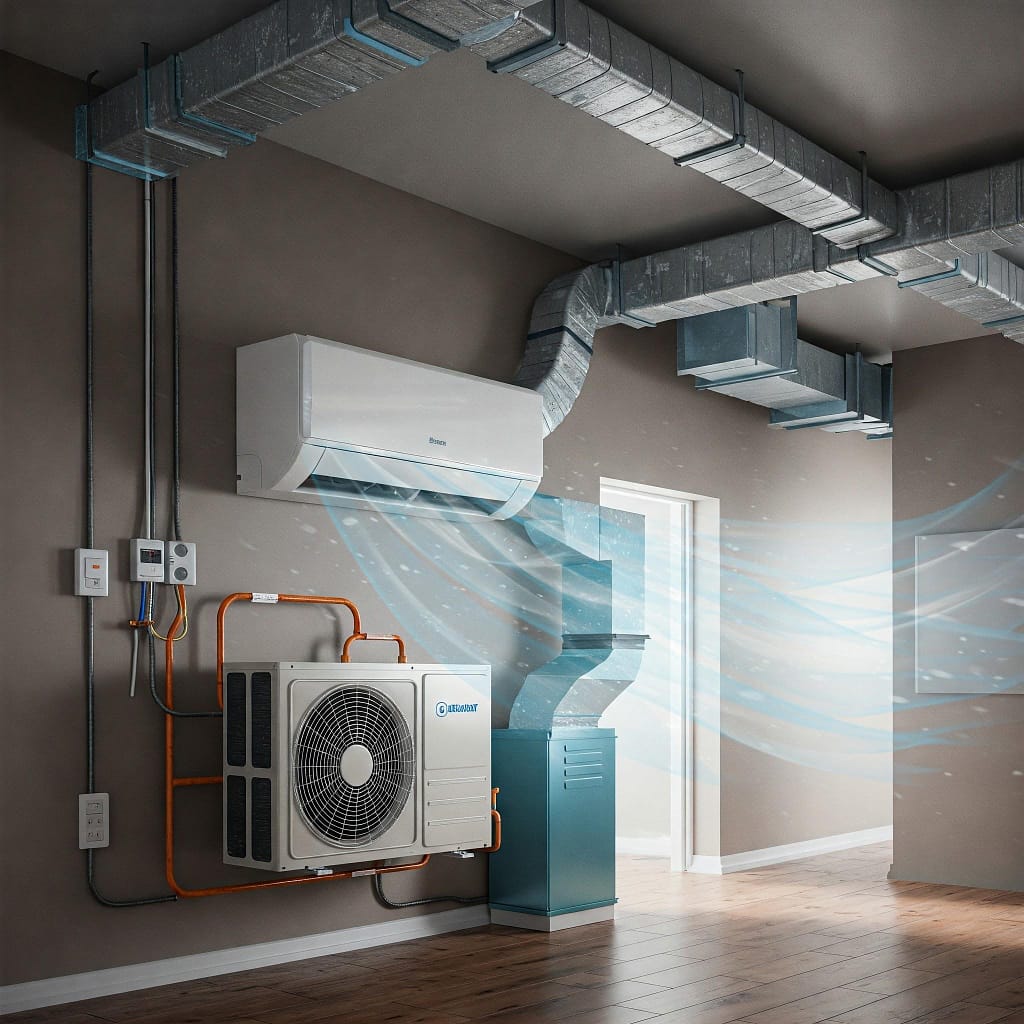How Many Types of Air Conditioning Systems Are There?

Air conditioning plays a crucial role in creating comfortable indoor environments. Whether for residential, commercial, or industrial use, selecting the right type of air conditioning system depends on several factors, including building size, energy efficiency goals, and budget.
Below are the most common types of air conditioning systems, along with their features and suitable applications:
1. Window Air Conditioners
To begin with, window air conditioners are compact, self-contained units installed through a window or wall. They are generally used for cooling individual rooms. Moreover, they are cost-effective and relatively easy to install, making them a practical choice for small residential spaces.
2. Split Air Conditioners
In contrast to window units, split air conditioners consist of two separate units: an indoor unit (evaporator and blower) and an outdoor unit (compressor and condenser). These systems offer higher energy efficiency and quieter operation. As a result, they are suitable for larger rooms or multiple-room setups.
3. Central Air Conditioning Systems
Central air conditioning systems are designed for whole-building cooling. They include a centralized unit connected to a duct system that distributes cooled air throughout the structure. Although they require more installation work and a higher upfront cost, they provide superior temperature control and consistent airflow in larger buildings or homes.
4. Ductless Mini-Split Systems
Unlike central systems, ductless mini-split air conditioners do not rely on ductwork. Instead, they use refrigerant lines to connect an outdoor unit with multiple indoor units. Consequently, they offer zoned cooling and are ideal for retrofitting older homes or buildings where installing ducts is impractical.
5. Portable Air Conditioners
Portable air conditioners are moveable units that can be easily relocated. These systems are often used as temporary or supplementary cooling solutions. However, they are generally less efficient than fixed systems and may require venting through a window or wall.
6. Packaged Air Conditioning Systems
A packaged air conditioning system integrates all components—compressor, condenser, and evaporator—into a single unit. Typically installed on rooftops or outdoor pads, these systems are frequently used in commercial spaces or residences with limited indoor space.
7. Geothermal Heat Pumps
While more complex and expensive to install, geothermal heat pumps provide both heating and cooling by utilizing the earth’s stable underground temperature. Therefore, they are highly efficient and environmentally friendly, making them a long-term investment in energy savings.
8. Variable Refrigerant Flow (VRF) Systems
VRF systems are advanced air conditioning systems that use variable-speed compressors to adjust refrigerant flow according to demand. As a result, they offer precise temperature control and high energy efficiency. These systems are ideal for large commercial spaces and multi-zone buildings.
9. Evaporative Coolers (Swamp Coolers)
Commonly used in dry climates, evaporative coolers work by passing warm air through water-saturated pads, which reduces air temperature through evaporation. While they consume less electricity than traditional ACs, they are not suitable for humid environments.
10. Hybrid Air Conditioning Systems
Lastly, hybrid air conditioners combine traditional HVAC technology with alternative energy sources like geothermal or solar. Thus, they reduce energy consumption and environmental impact, making them a sustainable solution for eco-conscious users.
Conclusion
In summary, the choice of an air conditioning system depends on a variety of factors, including space size, installation feasibility, climate, energy efficiency, and budget. While simpler systems like window and portable units serve small areas well, advanced options such as VRF or geothermal systems offer greater efficiency and control in complex environments. Therefore, understanding each system’s functionality and benefits is essential to making an informed decision.



